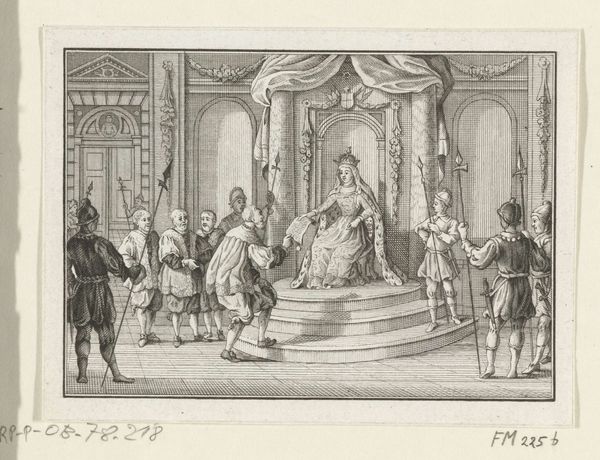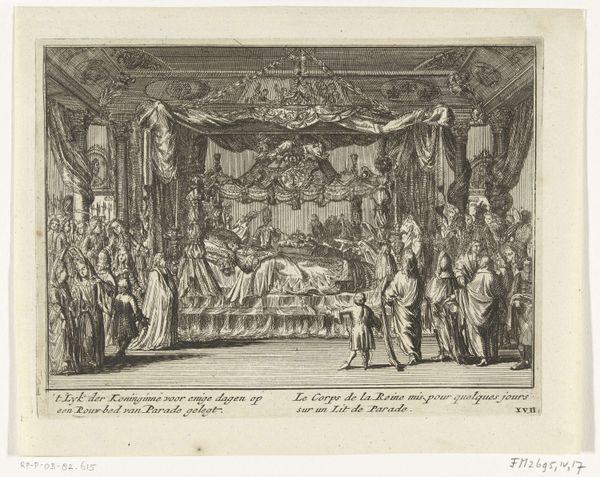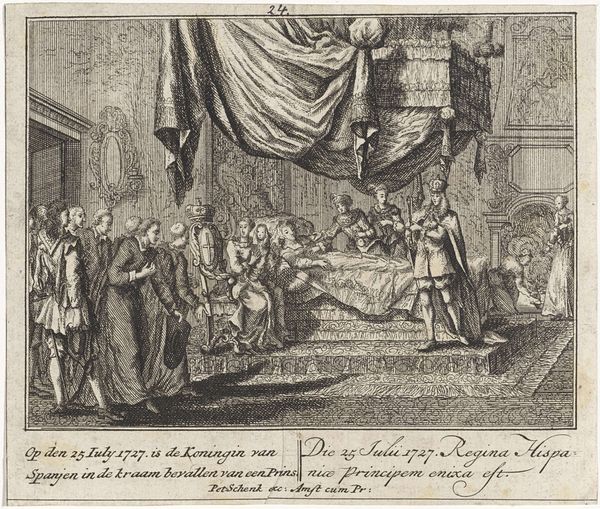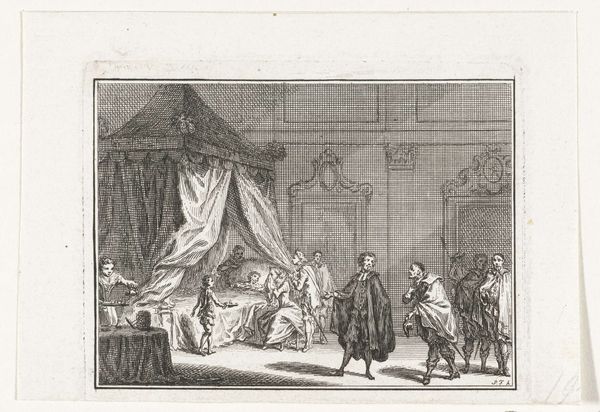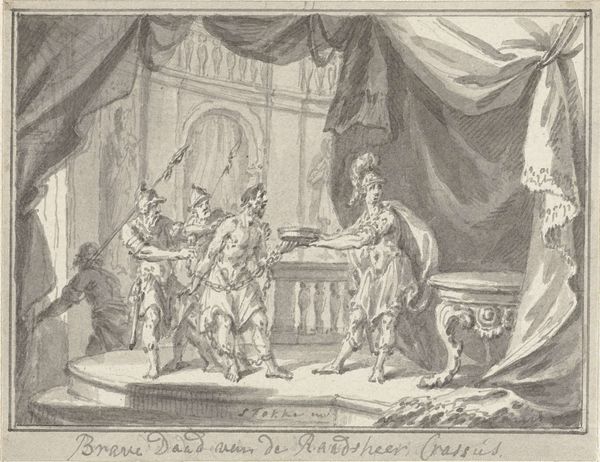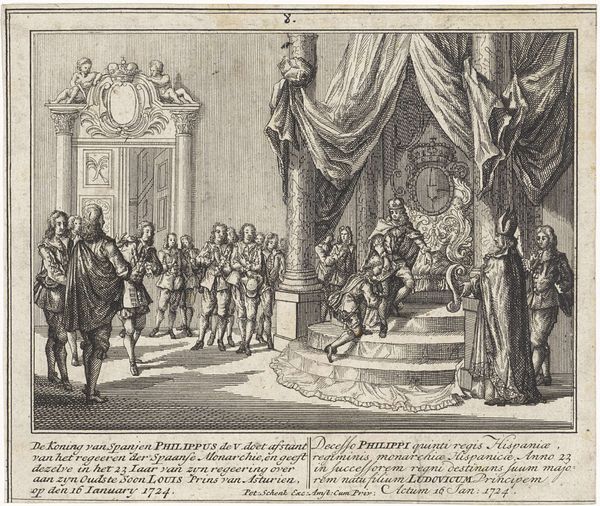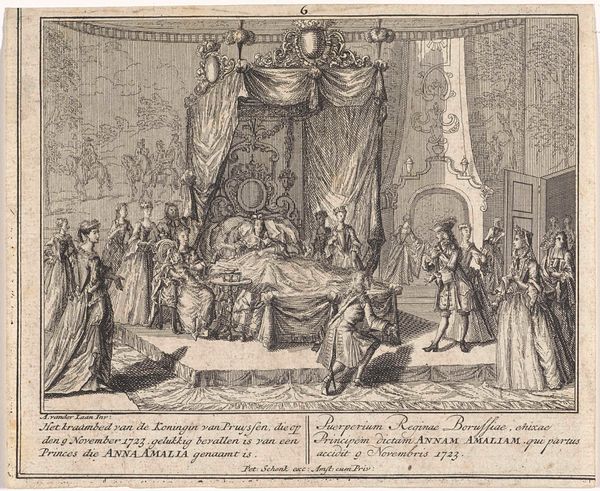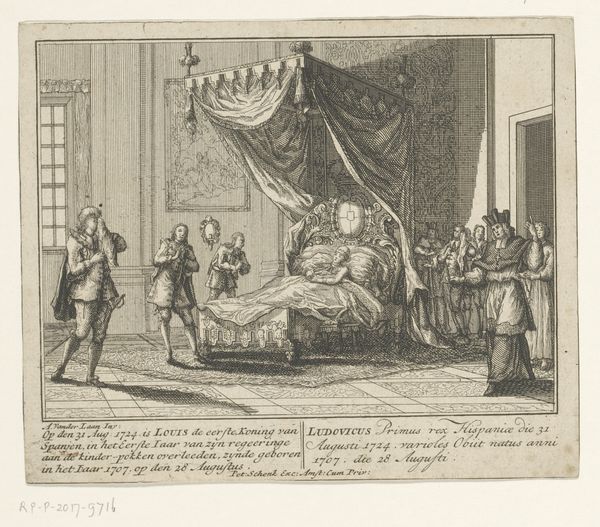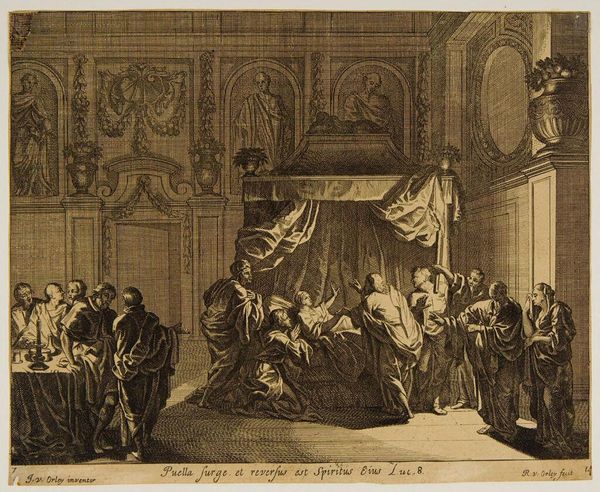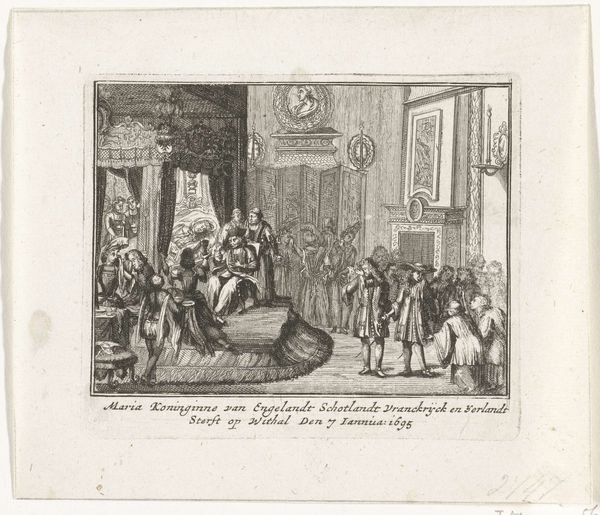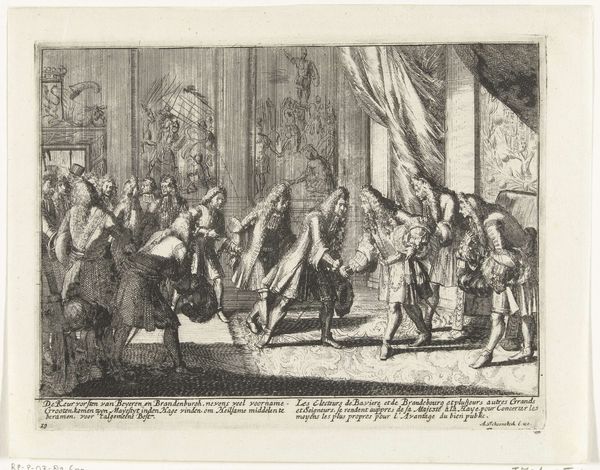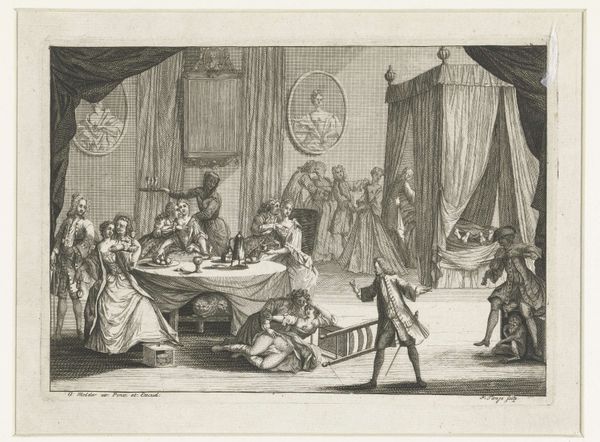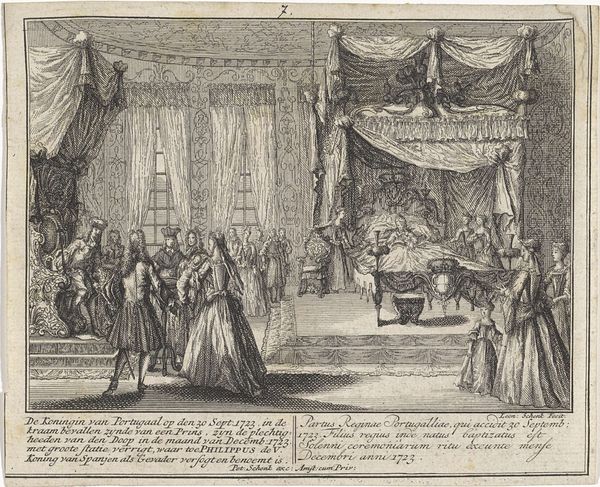
print, engraving
#
baroque
#
dutch-golden-age
# print
#
genre-painting
#
history-painting
#
engraving
Dimensions: height 69 mm, width 81 mm
Copyright: Rijks Museum: Open Domain
Editor: This is an engraving by Simon Fokke, "Sterfbed van Frederik Hendrik, 1647," created between 1756 and 1758. It depicts the deathbed scene, and it's fascinating how much detail is captured through engraving. What catches your eye in this piece? Curator: What I find interesting is how the artist has deployed a relatively inexpensive and reproducible medium – the engraving – to portray such a scene of dynastic power. Think about the material conditions here. We have an event, the death of a significant figure, represented through the labor of the engraver, Fokke. What does it mean to translate such a pivotal moment into something readily accessible and distributable? Editor: So, you're saying that the choice of engraving, rather than say painting, democratizes the image and makes it more widely available? Curator: Precisely! Consider the Baroque and Dutch Golden Age styles listed in the metadata; those artistic choices shaped how such imagery reinforced social structures and trade. Consider that paintings usually were in the hand of the elite only. Fokke, through engraving, allowed for dissemination on an unheard-of scale. It begs the question of whose narratives get circulated, and how are they being constructed via the availability of the art object. The image, printed over and over, moves into different hands, mediating relationships in various new social contexts. Editor: That’s a great point. It’s not just the event itself, but how the *making* of the image itself plays a role in shaping its meaning and cultural impact. So, it's about how labor and materials are interwoven into the broader social and economic fabric. Curator: Exactly! Focusing on production opens up a lot of different avenues of inquiry for analyzing this image and other pieces like it. Editor: I never thought about art that way before. Looking at the means of production offers a whole new level of understanding. Curator: It redefines the object in question, placing it in broader historical, social, and class frameworks.
Comments
No comments
Be the first to comment and join the conversation on the ultimate creative platform.
